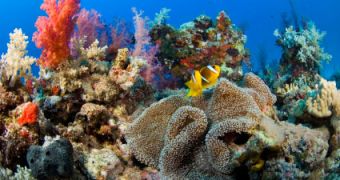Scientists are now looking into the possibility of using drones and underwater cameras to collect more information about coral reefs worldwide, maybe even determine how climate change and global warming are affecting them.
Thus, Stanford University graduate student Ved Chirayath has pieced together a remote-controlled drone, which he says is best described as a shoebox-size flying robot.
The drone packs several cameras, and can film these marine ecosystems from heights of up to 200 feet.
The footage recorded in this manner is then run through some software that was also developed by Ved Chirayath and which not only enhances resolution, but also removes any distortions caused by the movement of surface waves.
When images of coral reefs collected in this manner are put together with pictures snapped with the help of an underwater 360-degree camera, researchers are able to get a better idea of what coral reef systems look like and how they function.
As explained on the official website for the Stanford University, “The result is a centimeter-scale optical aerial map and stunning gigapixel panoramic photographs of coral heads that stitch together thousands of images into one.”
Furthermore, “Surveys and maps of rainforests have resulted in new understanding of the vital role these ecosystems play in sustaining the biosphere. Detailed coral maps could do the same, allowing scientists to conduct precise species population surveys over large areas and assess the impact of climate change.”
Presently, the Stanford University graduate student is working closely with researcher Stephen Palumbi to map, measure and study coral reefs off American Samoa's Ofu Island with the help of this innovative technology.
By the looks of it, some of these corals are as much as 15-20 feet (4.5-6 meters) wide, and have been around for 3 centuries, maybe even more.
Ved Chirayath hopes that, at some point in the future, this technology will be used to map our planet's oceans in their entirety.

 14 DAY TRIAL //
14 DAY TRIAL //